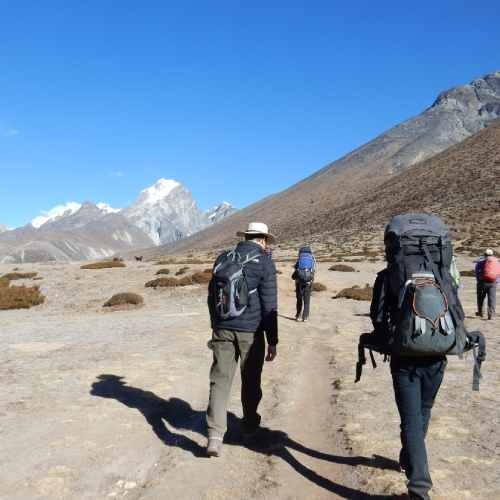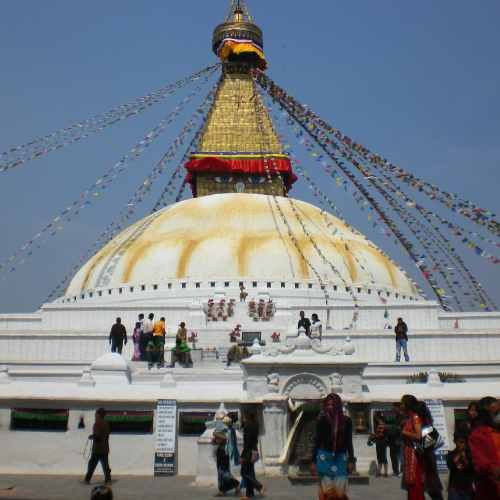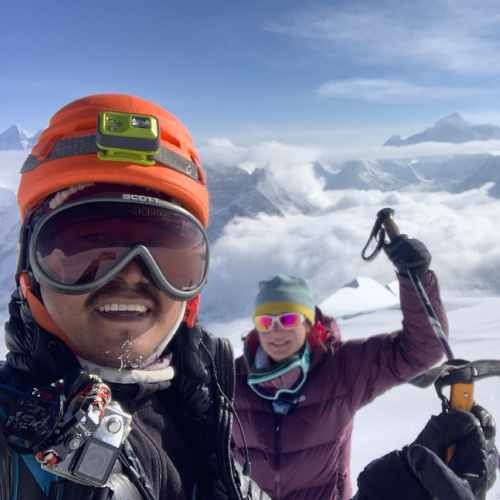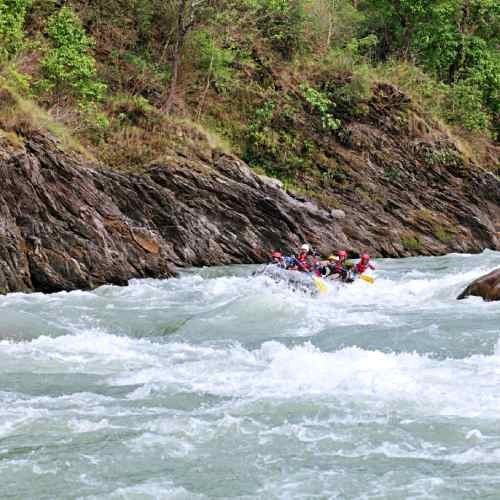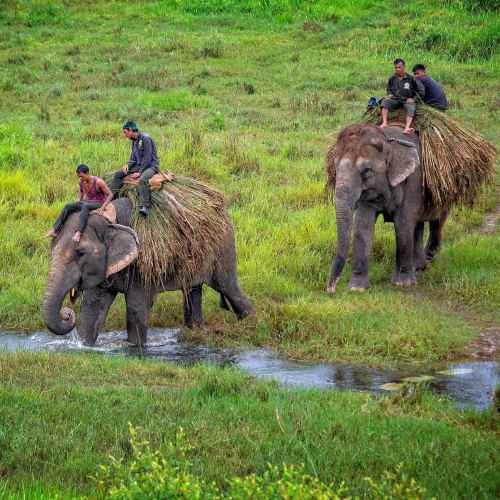Nepal
"Nepal, the Land of High Himalayan Mountains with World Eight Tallest Peaks"
The Federal Democratic Republic of Nepal is a landlocked country located in South Asia between China in the north and India in the east, west, and south, within the very lap of the massive Central Himalaya, where most of the world's tallest peaks are situated.
Nepal is a country blessed with the unique natural beauty of the high Himalayan Mountain Range, from the world's highest Mt. Everest, Mt. Kanchenjunga, Mt. Lhotse, Mt. Makalu, Cho-Oyu, Dhaulagiri, and Manaslu to the massive Annapurna Himalaya within the size of the country at 147,181 sq. km.
Nepal has a length of 885 km and a width of 193 km, a latitude of 26° 22’ N-30° 27 N, and a longitude of 80°4’ E-88° 12’ E. Kathmandu is the capital city and commercial hub of the country.
Nepal is also the world's richest country in terms of bio-diversity due to its varied geographical positions, where altitude rises from 60 m above sea level to the highest point on earth, Mt. Everest at 8,848 m, all in a mere distance of 150 km, which results in dramatic climatic changes from sub-tropical-alpine to Arctic.
Due to its unique position with all types of weather, dramatic landscapes, varied vegetation, and the world's highest mountains, Nepal is the ultimate destination on this planet.
Nepal is a country where people from around the world can choose various holidays from cultural and historical tours, visit pilgrimage sites of both Hindu and Buddhist origin, visit the birthplace of Lord Buddha (the light of Asia), and visit the land of legend, Gorkha, famous around the world as brave soldiers.
One can just relax, enjoying natural sceneries in the harmony of various cultures, or join in for scenic country walks, as Nepal offers more as a leading country for all types of outdoor activities and adventure sports, from trekking, mountaineering, white water rafting, kayaking, mountain biking, and jungle safari.
In Nepal, visitors can choose and enjoy various holiday destinations, including wild-life safaris in dense green jungles, riding on elephants on the lookout for the rare and endangered Royal Bengal Tiger and other mammals, and hundreds of different species of birds.
2020, also a Visit Nepal year, welcomes all travelers to join in the varied and different activities that Nepal has to offer with the warm and traditional hospitality of Nepalese in the country of great enchantment.
Nepal, besides its natural beauty of high mountains, lakes, rolling green hills, and valleys enriched with incredible cultures, is home to famous World Heritage Sites, from ancient religious monuments to historical places of great interest.
It has four major seasons. Spring: (mid-February to May), Summer: (June to August), Autumn: (September-November), Winter: December-February.
Nepal can be visited all year.
Nepal at a glance:
Nepal, occupying only 0.03% of the earth, is home to:
2% of all the flowering plants in the world 8% of the world's population of birds (more than 857 species); 4% of mammals on earth, 11 of the world's 15 families of butterflies (more than 500 species), 600 indigenous plant families, and 319 species of exotic orchids
Geography: Situated between China in the north and India in the south,
Capital: Kathmandu, with 1.5 million
Population: 28 million
Language: Nepali is the national language. However, travel-trade people understand and speak English as well.
Political System: Republic with Multi-Party Democracy
People: Nepal has more than 60 ethnic groups and 70 native spoken languages.
Religion: 70–75% Hindu, 20% Buddhist, 3% Muslim, and the rest with some Christianity and the ancient Bon sect of pre-Buddhism.
Currency: Nepalese Rupee
National anthem: Sayaun Thunga Phool Ka (different species of flowers in one bouquet)
Time difference: 5 hours, 45 minutes ahead of GMT
Climate: Climate ranges from tropical in the lowlands to cooler alpine mid hills to arctic zone temperatures in higher altitudes of snow and glaciers.
Some special facts about the country:
Nepal is the only country on planet Earth with an altitudinal variation that ranges from 70 meters to 8848 meters.
- Nepal’s flag is the only national flag in the world that is not quadrilateral in shape.
- Eight of the fourteen highest peaks in the world are above 8,000 m, including Mt. Everest (8,848 m), situated in Nepal.
- Birthplace of Lord Buddha (Light of Asia)
- Nepal is the second-richest country in water resources after Brazil and has the capacity to generate 84,000 megawatts of hydropower potential.
- Nepal is the land of the brave Gorkhas, who served in the British and Indian Army as well as in Singapore and have won 24 Victoria Crosses. Nepal’s sovereignty was never in foreign hands.
- 6,500 known species of trees, shrubs, and wildflowers are in Nepal, and flowering plants make up 2% of the world's population, with 319 species of exotic orchids.
- Nepal constitutes more than 8.5% of the world’s total bird species. It has nearly 870 species of birds, which is arguably more than the whole continent of Europe and North Africa combined. Nepal has 4.2% of the world’s butterfly species, which is over 650 species of butterflies.
- Nepal has the deepest valley in the world, the Arun Valley, and the deepest gorge, Kali Gandaki Gorge, located on the ancient Trans Himalayan Trade Route from Nepal to Tibet.
- It has one of the largest concentrations of the Royal Bengal Tiger, the second-largest population of the One-horned Rhino, and the best habitat for snow leopards and swamp deer.
- Nepal is one of the best arenas for extreme and adventure sport tourism, such as mountaineering, cannoning, paragliding, mountain biking, kayaking, rafting, bungee jumping, high-altitude marathons, etc.
- Kathmandu Valley has seven world heritage sites within a distance of only 20 kilometers. Tilicho Tal, in Manang district, is the lake situated at the highest elevation in the world.
.jpg)
